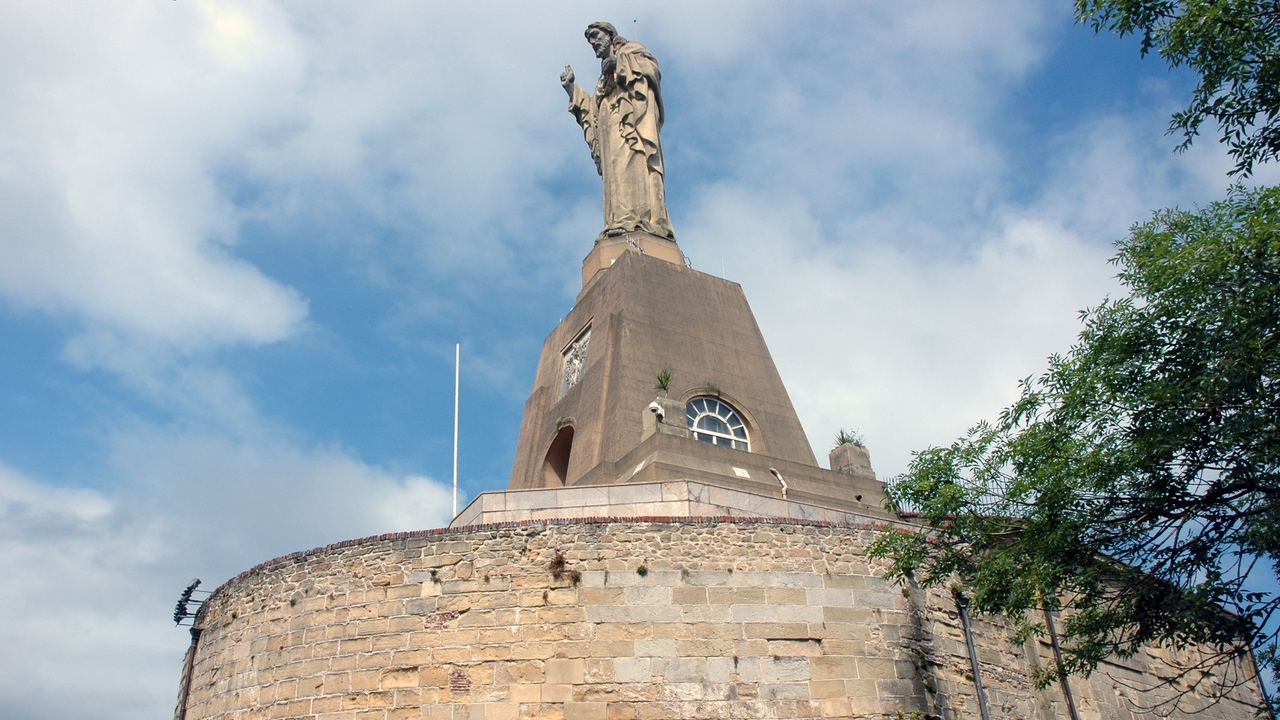
Urgull’s sacred heart is not a “Francoist symbol”
- Jessica Lewis
- 0
- Posted on
Neither “Francoist symbol” nor “instrument of dictatorial exaltation.” With this clarity, the bishop of San Sebastián, Fernando Prado, defends the presence of the popular monument of the Sacred Heart of Jesus that crowns Mount Donostiarra de Urgull.
The Claretian prelate responds in this way to the effort of EH Bildu and Elkarrekin (Podemos), which to seek to remove the bust of Christ from the enclave, Copying in the Democratic Memory Law. Under this umbrella, Both formations have urged the Historical Memory Council of the City of San Sebastián to request the State that the monument is included in the symbol catalog contrary to democratic memoryunder the argument that the monument considers it a “Exaltation of Franco’s National-Catholicism.”
“Faced with that difficult thesis to prove from historical rigor, individuals and solvent institutions who know and have investigated the history of the monument have certified that their genesis and purpose respond to an exclusively religious and popular motivation, outside of any political-partisan propaganda”he assures without any doubt the bishop in a thorough report of eight pages in which radiography both the history of the construction of the size and the popular devotion “alive” that it raises in the donostiarras, in addition to its ideological affinities. “Clearly retains its pious and faith character”affects the prelate.
In a pastoral text entitled “The Memory of the Heart”, Prado reviews the reason for being of the monument, which also celebrates 75 years of its inauguration. Although its launch took place in full dictatorship, the bishop details that “he had dreamed and projected decades earlier.”
Bishop Donostiarra, “from affection and respect, but without ambigu “It was not designed for ideological purposes at the time of the dictatorship”. “From an honest exercise of memory, there are no reasons to affirm or substantiate with historical rigor,” clarifies the pastor, who looks back until 1926 to explain that it was then when it was projected, in response to the encyclical “quas cousins” by Pius XI. “This is a project prior to institutionalized Franco,” he details, while revealing that the initiative “is born of believers and the people.” From there, in its report it stops in the comings and goings linked to its construction to determine that the motivation to lift it “It was exclusively religious: to respond with a permanent sign of faith to the yearning for peace, comfort and reconciliation experienced by the Donostiarras and Guipuzcoanos after years of suffering.”
It even stops that November 19, 1950, when the blessing of the effigy was carried out. “In that act, it was neither Franco, nor any other member of the Government or the Falange, unlike what was happening on similar occasions when many other buildings and public works in San Sebastián were inaugurated,” recalls Fernando Prado. “The non -propaganda and exclusively religious character of the opening ceremony itself clearly indicates the nature of the monument”, Insists.
For all this, the pastor is “Shocking, when not painful” that now the purpose of this ecclesial symbol that forms partand “of the current landscape and of the citizen, urban and religious memory of Donostia.”
In a row, the bishop seems to leave the occasional message to the two political formations that seek to eliminate the statue. Thus, explain that “you cannot pretend to link every religious symbol proposed or erected during the Franco era with the repression of the regime.” “Such a link is not necessarily followed by the facts or resists a rigorous historical analysis,” he drops at another time, qualifying these “erroneous inference” and “urban legend.”
In any case, in a self -criticism, he acknowledges that “it is true that during the dictatorship the Catholic Church maintained a degree of institutional relationship with the State, and that many Marian monuments or the Sacred Heart rose in that period.” “However, not every religious symbol erected during Francoism is per se or ipso facto a ‘Francoist monument’ or ‘a symbol of the national-catholic Francoist regime,” he emphasizes.
He even values how the Law of Democratic Memory is intended to “eradicate any exaltation of Franco”, but warns of the risk that this will become a “suppression or cancellation of a legitimate historical and religious heritage that, in addition, has been beneficial for citizenship.” “Instead of promoting a balanced debate and based on historical truth, such approaches could lead to depriving the city of a friendly symbol that has lived with war wounds”comments the prelate.
The bishop of San Sebastián goes further in his approach: “No one would think of demolishing the Donostia hospital for the mere fact of having been built during Franco and for having been inaugurated by Franco himself.” “Franco attended the ball numerous times in various pediments in San Sebastián. Should the ball parties as a regime symbols had to be suppressed for it?” He writes in his document in relation to one of the Basque reference sports.
Prado finishes his pastoral writing, not only defending the permanence of the monument, but claiming the public authorities, that is, both to the City Council and the Provincial Council, that “they continue to compromise in preserving this heritage, improving whether the environment and the project fits.” Even suggests that explanatory panels about the history of Mount Urgull be included, Remarking in these future plates the “common aspiration to reconciliation, without lifting confrontation walls from preconcepts or ideological biases.”